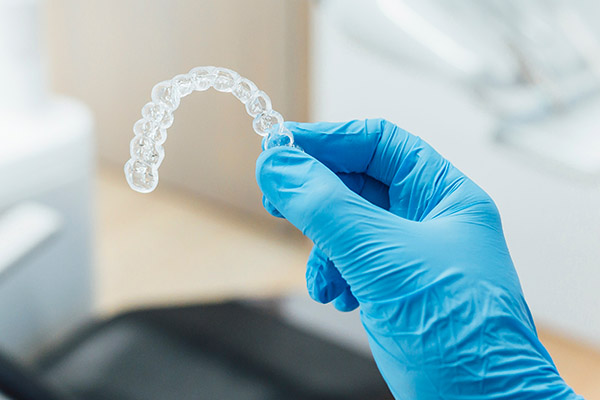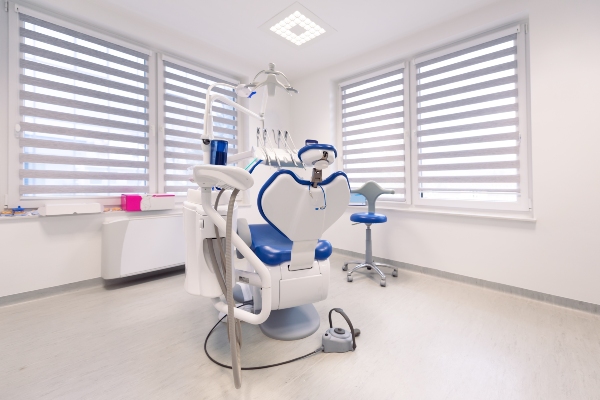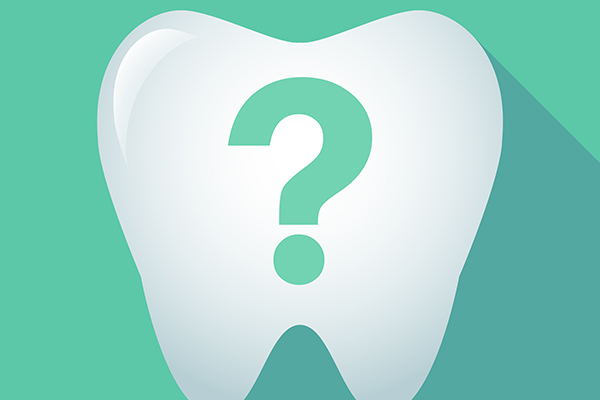 You may be interested in using Invisalign® to correct only your top or lower teeth. Continue reading to learn more about how Invisalign treatment is used. While Invisalign may be used to straighten either the lower or upper teeth, most situations require correcting the two dental arches. The purpose is to ensure patients have a well-aligned bite when the Invisalign treatment is complete.
You may be interested in using Invisalign® to correct only your top or lower teeth. Continue reading to learn more about how Invisalign treatment is used. While Invisalign may be used to straighten either the lower or upper teeth, most situations require correcting the two dental arches. The purpose is to ensure patients have a well-aligned bite when the Invisalign treatment is complete.
The need to straighten both dental arches with Invisalign
If only the top or bottom teeth are straightened, the opposing teeth will not line up correctly when biting down. The patient may have an unstable bite since other teeth will interfere and prevent the teeth from shutting properly. For a stable bite, opposing teeth must come together correctly, and if patients use Invisalign on only one arch of teeth, the alignment may not be right.
Some patients are tempted to ask about using Invisalign on only one arch to save money on their orthodontic treatment. However, this is not the case for most people. The cost of Invisalign treatment does not reduce by utilizing just one clear aligner instead of two clear aligners. When treating both arches versus a single arch, the expenses are fairly comparable since the same level of labor, materials, and clinical skill are required.
One arch correction is recommended in certain instances when the patient only needs minor tooth movements or straightening. The dentist will be able to tell during an orthodontic consultation before the start of the Invisalign treatment. For those who desire straighter teeth but think they might only require partial treatment, Invisalign for bottom or top teeth may be an option.
This is a single arch treatment, which means patients will only have to wear aligners on one of their dental arches. This is a good choice for people who want to fix a particular issue with their teeth instead of changing their complete occlusion or bite alignment of the upper and lower teeth. With single arch treatment, the number of aligners required is fewer, and patients can save money on the cost of Invisalign.
The procedure for single arch treatment
Invisalign treatment generally entails wearing a set of aligners over the bottom and upper teeth. Depending on the patient's situation, single arch treatment entails wearing Invisalign over the bottom or top teeth alone.
However, it is essential to remember that not everyone is a candidate for single arch treatment, and the dentist will evaluate each case individually. They will decide whether the person qualifies based on their occlusion and the overall expectations for their smile.
When there are only a few crooked teeth, and the only goal of treatment is the aesthetic elements of straightening the teeth and enhancing the smile's appearance, a single arch Invisalign treatment is usually a good option. If it is a case of crossbite or overbites, it is better to get treatment for both arches.
The bottom line
If you are considering Invisalign for only your top or bottom teeth, you should talk to a dentist first. They will perform the necessary evaluation to determine if it is a suitable option for your condition.
Request an appointment or call Brooklyn Heights Orthodontics: Susan Liebman, DMD at 718-416-6368 for an appointment in our Brooklyn office.
Recent Posts
As teenagers grow up, they may need orthodontic treatment, particularly if they have crooked teeth or gaps in their smile. These issues can affect their self-esteem and take a toll on their mental health if they are left unaddressed. Clear aligners are an effective treatment for teens to help correct misaligned or crowded teeth. In…
Wondering about Invisalign? Read on to learn more. Invisalign aligners are for teenagers and adults and offer an innovative method for aligning teeth. They are virtually undetectable and provide a discreet way to align your teeth for a beautiful smile. If you already have Invisalign or are considering it, learning how to keep your mouth…
Invisalign® has a huge following because of its emphasis on self-care. Each patient has different orthodontic issues and preferences. Severe dental misalignment will need traditional braces. Here are the instances when a dentist recommends Invisalign over metal brackets and wires.Traditional braces have metal brackets that tend to scrape the soft tissues of the mouth. Some…


